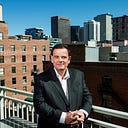The Emerging Intersection of Indoor Air Quality and Elon Musk

Tesla. SpaceX. Forbes’ wealthiest person on the planet. We all know the name behind these accomplishments: Elon Musk. From space exploration to innovative transportation solutions, Musk has demonstrated an ability to address even the most challenging corporate, social and technological challenges successfully. Under his leadership, Tesla has embraced the new, multi-prong reality confronting the global corporate environment — that to be successful, a company must execute a committed strategy that leverages new technology, skilled and adaptive talent, and addresses broader social and environmental responsibilities. According to this model, it is with great interest that Tesla is now considering perhaps one of the most crucial environmental safety issues of our time — assuring safe and clean indoor air.
Learning about Indoor Air Quality — from a Car?
Musk recently posted on his Twitter account that Tesla may release a “Super-Efficient” home energy system with high-efficiency particulate air filters similar to those used in the Tesla Model S and X vehicles. So, how did this initiative take shape? Musk acted in response to a post from composer John Mackey, who found that his Tesla’s “biohazard mode” provided better air filtration than his home.

In fact, Mr. Mackey’s observation is correct; the air inside his Tesla is very likely much cleaner than the air in his home. For the most part, we live in homes and work in offices that are by design, isolated from the outside environment. In a bid for energy efficiency, these newer buildings are designed to be virtually airtight, meaning that none of the high-dollar conditioned air escapes outside and none of the unconditioned outside air seeps in and affects the indoor climate. While that may sound good on paper, it also means that the natural sunlight is not continuously cleaning the indoor air we breathe like it is outdoors. Sunlight “cleans” the air through ionization by removing particles from the air and through the antimicrobial effects of UV light and low levels of hydrogen peroxide created by the oxidation of water molecules.
Without the benefit of sunlight, harmful bacteria, viruses, mold and chemicals can become trapped in indoor environments where they may remain indefinitely. Air filtration can reduce particle-borne contaminants in the air; however, it has limitations. They remove some larger contaminants, but many others are left behind to be breathed into our lungs. Surface cleaning can also help reduce risks from these harmful agents, but neither of these methods outperforms the use of an “active” air treatment system or a combination of best available technologies. This is the approach identified by Elon Musk — high-efficiency particulate air filters.
Harvest Sunlight Indoor to Improve Indoor Air Quality
Technologies for indoor air quality (IAQ) have advanced considerably beyond simple air filtration. Now, it is possible to harvest the energy from UV lamps and use it to convert relative humidity in the air to hydrogen peroxide molecules, much like what occurs outside in natural sunlight. When this process is combined with traditional filtration efforts and an ionizer, indoor air can be “actively” cleaned and sanitized. Research has shown that harmful microorganisms, including SARS-CoV-2, the virus that causes Covid-19, can be inactivated using this technology.
To promote cleaner and safer indoor air, RGF® Environmental Group manufactures many IAQ devices including HEPA filter for homes and commercial pairs ionization with powerful UV light. The equipment can be installed directly into existing HVAC systems inside virtually any residential or commercial indoor environment to support continuous, active indoor air cleaning. This innovative IAQ equipment produces low levels of hydrogen peroxide, like those produced by natural sunlight, safe for occupied indoor spaces. The molecules attach and inactivate airborne contaminants, safely and effectively neutralizing the threat. Ultimately, hydrogen peroxide reverts to water and leaves no chemical residue.
RGF devices have been successfully installed in HVAC systems inside hundreds of thousands of homes, office buildings, schools and universities, hospitals, and many other facilities across the United States. Similar systems are also used to control norovirus and other harmful food-related pathogens in restaurants and food manufacturing plants.
Recently, in the wake of the global pandemic, we have seen this same technology applied to mass transit in cities across the country. Several metros have already adopted IAQ systems to prevent the spread of viruses on subway trains and buses.
Unexpected Allies Focus on Indoor Air Quality

Over the last 12 months, a topic that was largely exclusive to the HVAC and engineering communities has taken center stage. Suddenly, everyone is talking about IAQ and taking a closer look at the quality of the indoor air we breathe and its impact on public health. As we have seen repeatedly in response to social crisis, the powerful innovation of the private sector offers an influx of capital and forward-thinking ideas as a means of tackling difficult challenges.

As we bear witness to Tesla answering the call for innovative leadership and social responsibility, we consider other technological “first responders” battling on the front lines of the pandemic. RGF has long been the leader in IAQ for commercial, residential and government agencies. United by the common goal of Healthy Indoor Air Quality for All, RGF finds itself aligned with technology-forward visionaries like Musk and Tesla as the country, and world, watch for transformative breakthroughs.
Disclosure: Dr. Marsden is the Executive Director for Science and Technology at RGF® Environmental Group, a company that manufactures IAQ technology and product solutions.
